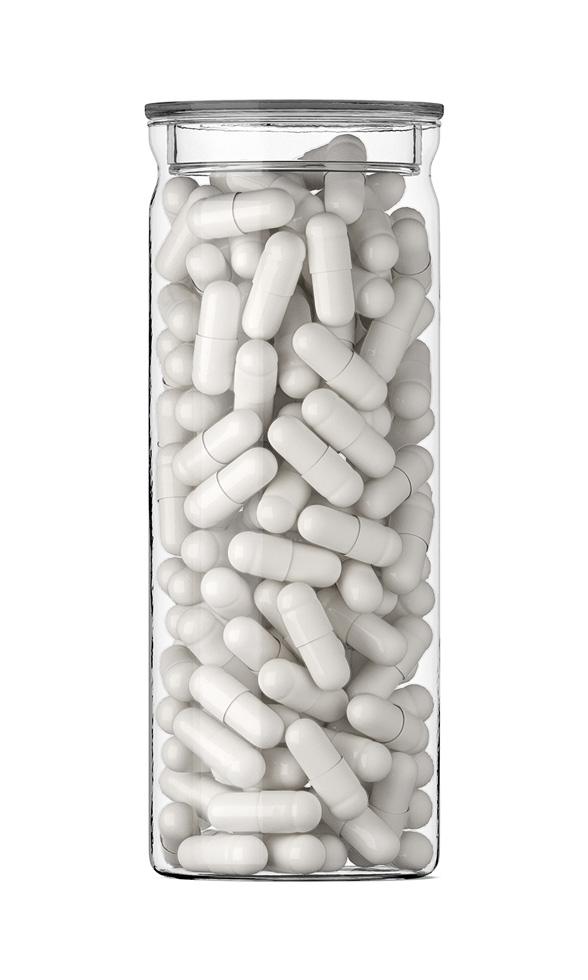- Description
- Reviews (0)
- Store Policies
- Inquiries
Description
Overview of Boric Acid Vaginal Capsules
-
Dosage Strength of Boric Acid Vaginal Capsules
- 600 mg
Boric acid is available as a vaginal capsule. The vaginal capsule is used to treat the symptoms of vulvovaginal candidiasis. Boric acid was first marketed in 1939. In January, 2016, a homeopathic vaginal suppository became commercially available for the treatment of vulvovaginal candidiasis; the product has not been evaluated by the FDA for safety or efficacy for the stated use and the FDA is not aware of scientific evidence to support homeopathy as effective.
Boric acid is a weak topical anti-infective agent with fungistatic and bacteriostatic properties. The exact mechanisms of boric acids antibacterial and antifungal actions are unclear. Boric acid exerts slow-acting bacteriostatic activity against staphylococci and streptococci. There is some evidence, specific to vaginal use, suggesting that the fungistatic activity of boric acid is due to vaginal acidification, which results in fungal cell wall penetration and disruption of the fungal cell membrane. Alternatively, other evidence suggests that boric acid works at a pH similar to that of the healthy, untreated vaginal tract, and, therefore, the activity of boric acid may not be a result of increased vaginal acidity.
Do not use boric acid products in patients with a history of an allergic reaction to boric acid or any of the product ingredients; discontinue use of allergic-type reactions occur.
Boric acid should never be administered to neonates or infants. Do not use boric acid vaginal products in children 12 years or younger. Keep all boric acid products out of the reach of children; oral accidental exposure must be avoided in patients of any age. The risk of systemic toxicity from boric acid depends on the concentration used, route of administration, age of the patient, skin condition, and duration of exposure. The fatal adult dose is about 20 grams or 0.1 to 0.5 mg/kg taken orally. Even topical administration of boric acid powder for diaper dermatitis has caused toxic reactions and fatalities in infants. If accidentally swallowed, seek medical help or contact the Poison Control Center immediately.
Boric acid vaginal capsules are not recommended for use by patients with high blood pressure, cardiac disease or blood vessel disease. Vaginal use is not recommended in patients with immunosuppression, including patients with acquired immunodeficiency syndrome (AIDS); use is considered contraindicated by the manufacturer. Patients with known sexually transmitted disease (STD) or a history of pelvic inflammatory disease (PID) should only receive the vaginal boric acid products under the close supervision and prescription of a healthcare provider. Patients should discontinue use and seek medical examination and advice for any vaginal bleeding, sores, ulcerations, nausea, fever or chills, sensitivity in your lower pelvis or abdomen, or suspected sexually transmitted disease (STD) or pelvic inflammatory disease (PID). Open genital or vaginal wounds can increase the risk for systemic absorption of boric acid and toxicity. Systemic absorption of topical boric acid may also result in severe poisonings and fatalities. Conditions which increase systemic absorption include use over large surface areas, prolonged use, use in areas where the epidermal barrier is disrupted (i.e., skin abrasion), and the use of an occlusive dressing.
Boric acid vaginal products should not be used during human pregnancy due to the risk of teratogenic effects and the lack of data demonstrating safety.2 Topical boric acid preparations should also not be used in pregnant women unless the benefit outweighs the potential risk.
It is not known if boric acid is excreted in breast milk. No data is available regarding the safety of boric acid vaginal products in lactating mothers; therefore, vaginal boric acid should not be recommended in this patient population. Topical boric acid products should not be used to soothe irritated skin on the breast or nipple, or to any area of the skin to which the infant could potentially be exposed, in women who are breastfeeding. Boric acid does not readily penetrate intact skin and there is minimal systemic absorption vaginally. Consider the benefits of breastfeeding, the risk of potential infant drug exposure, and the risk of untreated or inadequately treated condition. If a breastfeeding infant experiences an adverse effect related to a maternally administered drug, healthcare providers are encouraged to report the adverse effect to the FDA.
Boric acid vaginal products should not be used during human pregnancy due to the risk of teratogenic effects and the lack of data demonstrating safety. Topical boric acid preparations should also not be used in pregnant women unless the benefit outweighs the potential risk.
It is not known if boric acid is excreted in breast milk. No data is available regarding the safety of boric acid vaginal products in lactating mothers; therefore, vaginal boric acid should not be recommended in this patient population. Topical boric acid products should not be used to soothe irritated skin on the breast or nipple, or to any area of the skin to which the infant could potentially be exposed, in women who are breastfeeding. Boric acid does not readily penetrate intact skin and there is minimal systemic absorption vaginally. Consider the benefits of breastfeeding, the risk of potential infant drug exposure, and the risk of untreated or inadequately treated condition. If a breastfeeding infant experiences an adverse effect related to a maternally administered drug, healthcare providers are encouraged to report the adverse effect to the FDA.
There are no drug interactions associated with Boric Acid products.
Generally, boric acid vaginal products are not associated with significant adverse effects when used for short courses (6 days or less) for vaginal conditions. Most side effects with vaginal capsules use are considered mild and may include watery vaginal discharge, vaginal irritation, erythema, or a slight burning sensation, or a gritty sensation with intercourse during the treatment period. It is advised to avoid sexual intercourse during the treatment period; patients may also wish to wear a panty liner due to potential vaginal discharge with treatment. Allergic reactions can occur with any boric acid product and may include anaphylactoid reactions, dyspnea or difficulty breathing, chest pain (unspecified), angioedema, pruritus, urticaria or other rash (unspecified), pruritus, and skin irritation or inflammation. If these occur, discontinue use.
When boric acid is ingested, applied repeatedly, in higher concentrations, and/or large amounts to wounds, burns, abrasions, denuded, or macerated skin, or when applied to large areas of the skin, severe boric acid poisoning and fatalities have occurred. Systemic toxicity occurs with oral ingestion of boric acid as well. The risk of systemic toxicity depends on the concentration used, route of administration, age of the patient, skin condition, and duration of exposure. The fatal adult dose is about 20 grams or 0.1 to 0.5 mg/kg taken orally. Intravaginal boric acid is safe to use and expected not to pose risk of systemic toxicity at the prescribed dosage. There appears to be a higher incidence of toxicity in infants and children under the age of 3 years with topical application. Signs and symptoms of acute toxicity following excessive absorption of boric acid may include: nausea and vomiting; diarrhea; abdominal pain; hemorrhagic gastroenteritis; CNS stimulation (weakness, lethargy, headache, restlessness, tremor, twitching of facial muscles and extremities, and seizures) followed by CNS depression; metabolic acidosis; intravascular coagulation; and fever. Severe and fatal poisoning with boric acid may manifest as oliguria, anuria, renal tubular necrosis, hepatomegaly, jaundice, cyanosis, shock, circulatory collapse, and death. If accidentally swallowed or if systemic toxicity is suspected, seek medical help or contact a poison control center immediately.
Store this medication at 68°F to 77°F (20°C to 25°C) and away from heat, moisture and light. Keep all medicine out of the reach of children. Throw away any unused medicine after the beyond use date. Do not flush unused medications or pour down a sink or drain.
1.Prutting SM, Cerveny JD. Boric Acid Vaginal Suppositories: A Brief Review. Infect Dis Obstet Gynecol 1998;6:191-4.
2.Hylafem (boric acid) vaginal suppository package insert. Decatur, GA: US Pharmaceutical Corp.; 2016 Jan.
3.Centers for Disease Control and Prevention (CDC). Sexually Transmitted Diseases Treatment Guidelines 2015. MMWR. 2015;64(3):1-137
4.Baliah T, MacLeish H, Drummond KN. Acute boric acid poisoning: report of an infant successfully treated by peritoneal dialysis. Can Med Assoc J 1969;101:166-8.
5.Rosen FS, Haggerty RJ. Fatal poisoning from topical use of boric acid powder. N Engl J Med 1956;255:530-1.
6.Van Slyke KK, Michel VP, Rein MF. Treatment of vulvovaginal candidiasis with boric acid powder. Am J Obstet Gynecol 1981;141:145-8.
Be the first to review “Boric Acid Vaginal Capsules”
General Inquiries
There are no inquiries yet.









Reviews
There are no reviews yet.